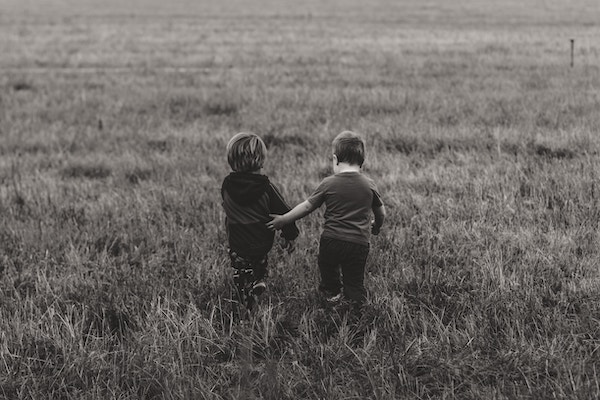Relationships Between Characters, Part 1: Allies
Why The Hero Is Never Alone.

Allies Embody the Principle of Cooperation
Despite their complexity and diversity, there are essentially only three different kinds of human relationships.
That’s right, if you take a step back and try to categorize human interactions, you’ll find three distinct types. Biologists know this, because the principle applies to any species that lives in groups. Within the group, three types of behavior may be observed:
- individuals cooperate with each other
- individuals compete with each other
- individuals mate
Evolutionary biologists describe a spectrum of individual to group selection. Some animals will typically try to maximize their individual gain, as exhibited in behaviors such as taking the biggest share of food or the best space for offspring, without regard for other animals in the group. On the other hand, some species have evolved social organizations in which individuals may act purely for the group’s benefit rather than individual gain. Think of ants, bees, or termites.
Interestingly, on this spectrum between profit maximization and altruism, homo sapiens sit pretty much exactly in the middle. Humans are genetically programmed to selfishness, to seek what is perceived as best for oneself and one’s immediate family, and at the same time have a strong and innate instinctive and natural urge towards cooperation and social behavior – which ultimately also increases our survival chances.
Cooperation, neighborliness, charitable behavior, acts of kindness – even if they costs us, they generally make us feel better and they make life in the tribe, clan, or community so much easier. Mind you, we do like to look after number one. We’re not going to simply give up our salaries, our homes, our lifestyles. Our own needs and those of our families come first. Who is not aware of this dichotomy?
The pull in opposite directions between egoism and altruism is perhaps one of the specifics of human beings as a species that has caused us to evolve abstract thought processes as well as complex societal and cultural forms. It also sheds light on basic principles of storytelling such as conflict.
Very few stories have more than 150 characters. The cast of characters in a story is manageable in the sense that the audience is expected to know and comprehend the role of each character in the story, including the bit parts. In real life today, more people than that influence our lives, but in a narrative, cause and effect tend to be clearly understandable, and we see in a story whether one character helps or hinders another.
A Protagonist Needs Allies
Each of the cast of characters in a story will have their own interests and strivings. But some of them will desire the same ends. Around a protagonist, a mentor, a contrastor figure or best friend, a loyal subordinate, or lover may gather – a group of characters who, in the end at least, all want to achieve the same thing. Other archetypal characters such as a friendly animal or some apparently minor figure who is a symbol for the solution may appear to point out the way.
In short, the ally characters show that cooperation leads to success.
Likewise a villain or antagonist is seldom alone. Forces gather, groupings and coalitions form. As people identify with one another, characters work together to attain an end. While some characters put obstacles in the hero’s way, others provide ways of removing them.
Each character that comes round to helping another is demonstrating the principle of cooperation, which is what any group needs in order to ensure not only the survival of the group itself but of (the majority of) its individual members.
Every ally, friend, or helper stands for this principle. Every act by a character that aids another, and every instance of altruism for its own sake, represents the bonding together of a tribe, clan, or community. Every character that realizes at some point that their own egoistic interests may not be as important as whatever cause is being fought for demonstrates the underlying theme of selflessness over selfishness which is visible more or less directly in most stories, even in those that convey it by negative example.
Allies are heart-warming. They help the hero by providing alternative visions and solutions to problems. Thus they provide powerful emotions for the audience. Especially when you kill one off.
Photo by Kevin Gent on Unsplash.
Now read Relationships Between Characters, Part 2: Opponents.
Related function in the Beemgee story development tool:
Character Developer

